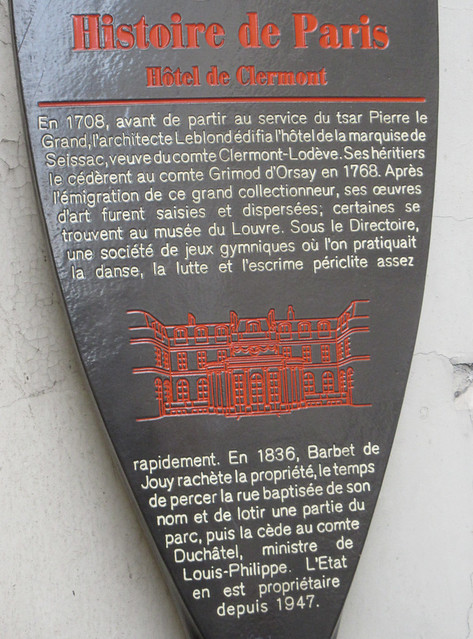Hôtel de Clermont. En 1708, avant de partir au service du tsar Pierre le Grand, l'architecte Leblond édifia l'hôtel de la marquise de Seissac, veuve du comte Clermont-Lodève. Ses hértiers le cédèrent au comte Grimod d'Orsay en 1768. Après l'émigration de ce grand collectionneur, ses oeuvres d'art furent saisies et dispersées, certaines se trouvent au musée du Louvre. Sous le Directoire, une société de jeux gymniques où l'on pratiquait la danse, la lutte et l'escrime periclite assez rapidement. En 1836, Barbet de Jouy rachète la propriété, le temps de percer la rue baptisée de son nom et de lotir une partie du parc, puis la cède au comte Duchâtel, ministre de Louis-Philippe. L'Etat en est propriétaire depuis 1947.
69 rue de Varenne, Paris
Google Streetview
OpenStreetMap
Subjects
None identified yet. Subjects are curated by hand so please bear with us.

